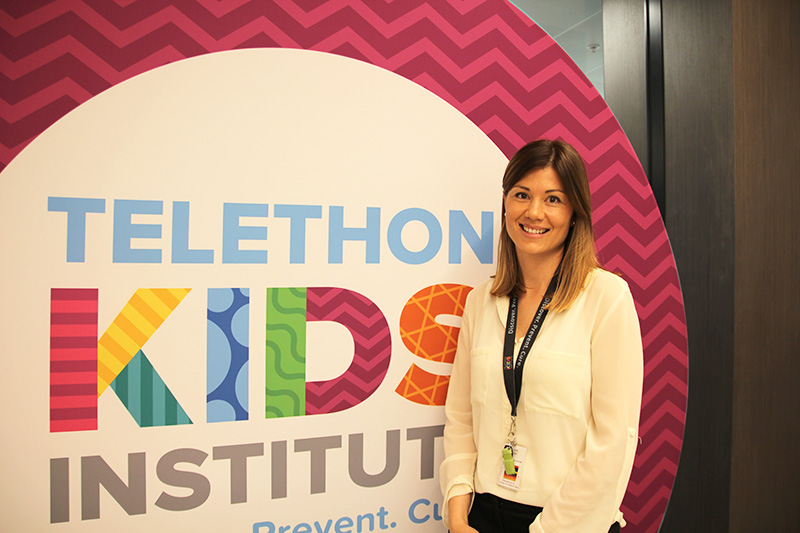 Lead researcher Natalie Kippin
Lead researcher Natalie Kippin
A study revealing significant levels of language difficulty among detainees at the Banksia Hill Detention Centre underscores the need for more support for young people trying to navigate the justice system, The Kids Research Institute Australia researchers say.
The research, published in the International Journal of Law and Psychiatry, found many of the teenagers assessed as part of the study had language skills well below that expected for their age, with almost half meeting the criteria for language disorder. Much of the language disorder was associated with Fetal Alcohol Spectrum Disorder (FASD).
The research also revealed that language diversity was common, with Standard Australian English not the first or even second language for many of the young people.
Lead researcher Natalie Kippin, a speech pathologist with the Alcohol and Pregnancy & FASD research team at The Kids, said these communication barriers meant many young people were going through highly verbal legal and rehabilitation processes at a significant disadvantage.
“Effective two-way communication skills are needed at all points of the justice system – from contact with police through to court appearances and programs in detention,” Ms Kippin said.
“A young person with language disorder and/or FASD can find it hard to comprehend and communicate effectively. Similarly, language diversity – not a disorder, but simply a difference in language – can pose significant barriers to understanding youth justice processes.
“If you’ve got kids who don’t understand what’s being said – particularly the complex vocabulary and grammar used in legal interviews and meetings – it’s difficult for them to understand expectations and comply with instructions.”
Young people with language disorder could also be less able to provide accurate and coherent explanations about alleged events or criminal behaviour.
“Legal interviews require story re-telling, and recalling and sequencing detailed events can be tricky for those with language disorder,” Ms Kippin said. “These young people may also have trouble participating in and benefiting from youth justice education and behaviour change programs.”
The study is a follow-on from the broader Banksia Hill project, which earlier this year revealed that almost 90 per cent of the young people assessed for the project had at least one form of severe neurodevelopmental impairment.
The latest research examined the language skills of 98 young people at Banksia Hill and found nearly one in two of them had language disorder. More than half of those with language disorder were also diagnosed with FASD.
Ms Kippin said researchers had wanted to understand more about the impact of FASD on communication skills, but had also been keen to find out more about the young peoples’ language backgrounds.
They found less than a third of the participants spoke Standard Australian English (SAE) as a first-language. All up, they identified 19 different languages, including SAE, non-Australian languages, Aboriginal English, and nine other Aboriginal languages.
“The language diversity we discovered has never really been acknowledged in WA youth justice before, and it should be seen as a significant strength,” Ms Kippin said.
“We have young people who are speakers of multiple languages including Aboriginal languages, and we have an important opportunity to recognise and respond to that. Their languages are part of who they are. Language is strongly connected to culture and supports self-esteem and pride. This needs to be acknowledged and considered in the way services are provided.”
Ms Kippin said given SAE was the common currency of verbal exchange in justice systems throughout Australia, it was critical that youth justice systems considered SAE competency so they could better respond to young people’s needs.
“Our local WA legislation also requires that language ability be considered in the youth justice system,” she said.
Ms Kippin said the findings demonstrated that supports for language and communication, including speech pathologists and interpreters – which were available but not always used – needed to be prioritised and embedded as core service within the justice system.
“Speech pathologists can play a particularly helpful role in justice settings, and together with interpreters, can ensure better identification of and response to the communication and rehabilitation needs of young people navigating youth justice systems.”
The research was conducted with the cooperation of the Western Australian Departments for Communities and Justice. Ms Kippin is a PhD candidate with The Kids, the FASD Research Australia Centre for Research Excellence, and Curtin University.
The paper, Language diversity, language disorder, and fetal alcohol spectrum disorder among youth sentenced to detention in Western Australia, can be read here.
